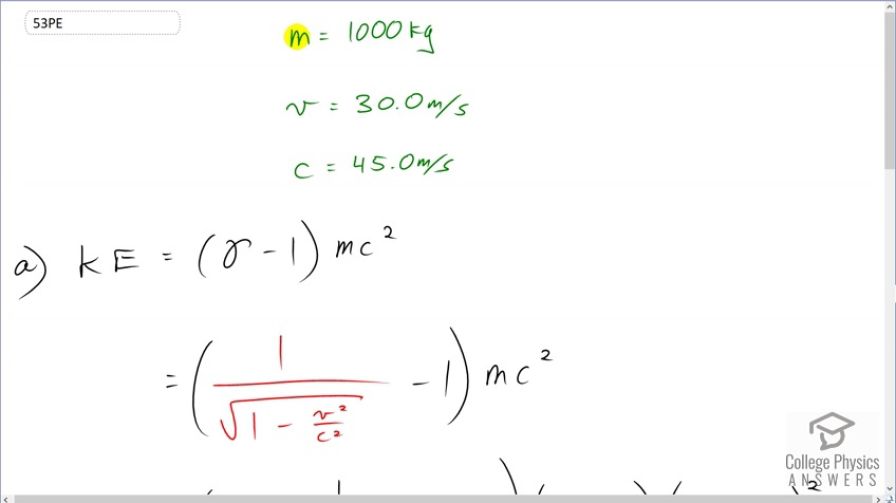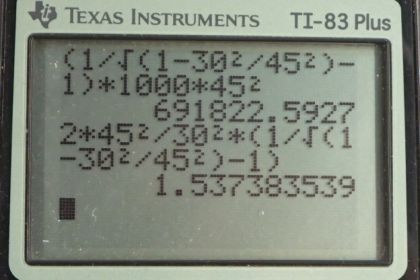Question
(a) Calculate the relativistic kinetic energy of a 1000-kg car moving at 30.0 m/s if the speed of light were only 45.0 m/ s. (b) Find the ratio of the relativistic kinetic energy to classical.
Final Answer
- 1.54
Solution video
OpenStax College Physics for AP® Courses, Chapter 28, Problem 53 (Problems & Exercises)

vote with a rating of
votes with an average rating of
.
Calculator Screenshots
Video Transcript
This is College Physics Answers with Shaun Dychko. We are going to suppose that the speed of light is 45 meters per second and a car is moving with a velocity of 30 meters per second and has a mass of 1000 kilograms and what is its kinetic energy? Well, it's gonna be gamma minus 1 times its mass times the speed of light squared. And gamma is 1 over square root 1 minus v squared over c squared and so that's minus 1 times m squared times c squared. And so then we substitute in to get our answer. So that's 1 over square root of 1 minus the speed of the car—30 meters per second squared— divided by this hypothetical speed of light— 45 meters per second squared— minus 1 times the—1000 kilograms— mass of the car times—45 meters per second squared— hypothetical speed of light and that gives an energy of 6.92 times 10 to the 5 joules. In part (b), we are going to take the ratio of this relativistic calculation for the kinetic energy divided by the classical calculation for the kinetic energy. So the classical calculation is one-half mass times velocity squared. So we have, I guess I could have plugged in the answer for part (a) up here but instead I have done some algebra. So substitute it in the formula for the relativistic kinetic energy and we are going to cancel the masses and then multiply top and bottom by 2 so that the one-half cancels in the bottom and we are left with a factor 2 in the top times c squared divided by this v squared times the Lorentz factor minus 1. So we plug in numbers here. So that's 2 times hypothetical speed of light— 45 meters per second squared— divided by the speed of the car— 30 meters per second squared— times bracket 1 over square root 1 minus 30 squared over 45 squared minus 1 giving a ratio of 1.54. So this relativistic calculation for the kinetic energy is 54 percent greater than the classical calculation for the kinetic energy when you have a speed of light only 45 meters per second.
